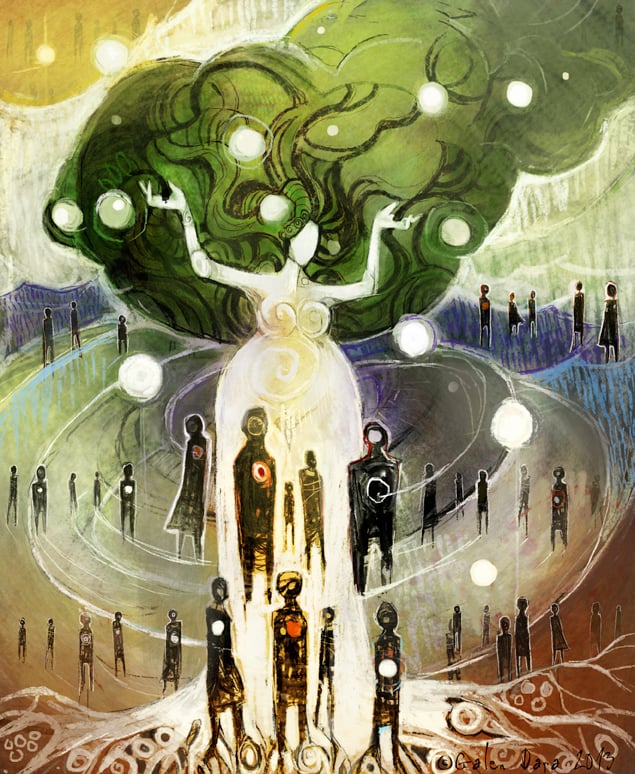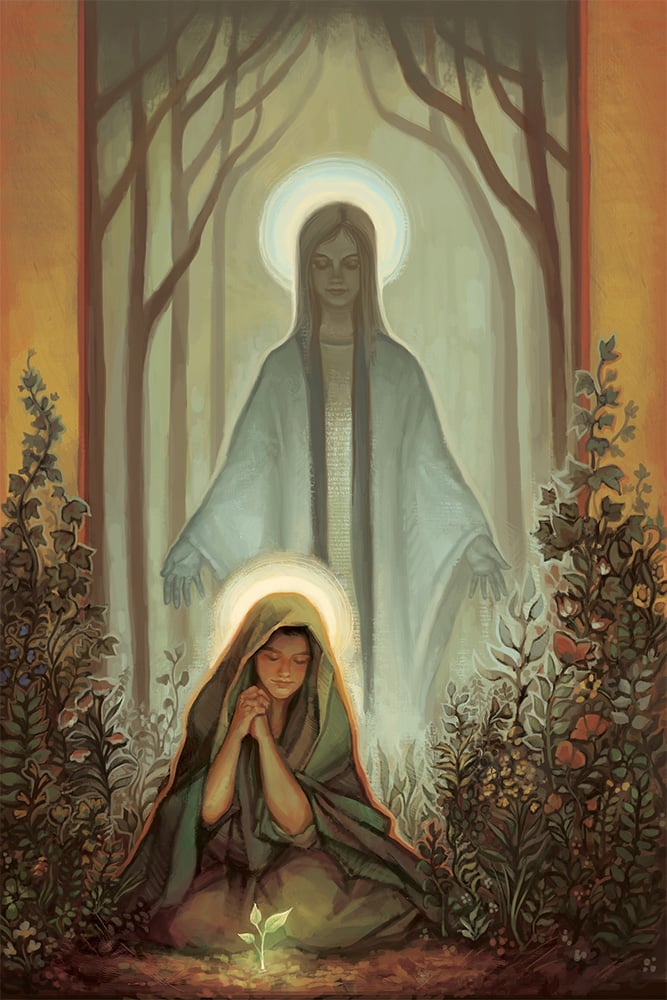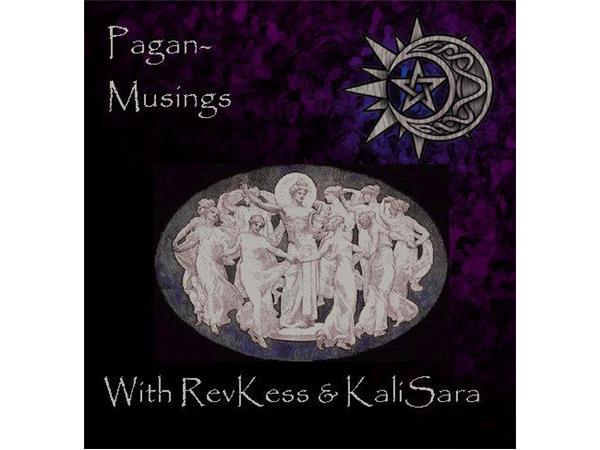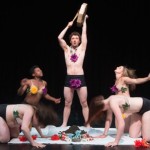
When I was in grade school, my mother told me that, when I was younger, I had told her that I remembered my Heavenly Mother from the premortal existence. According to my mother, I had described my Heavenly Mother as having long dark hair. I was raised Mormon, so I grew up believing that I had a Heavenly Mother as well as a Heavenly Father, but we did not pray to her and rarely spoke of her. When we did, it was in whispers and allusion. As a result, I always felt a little like a spiritual orphan.
Last week, I had what I think is about as close to a Pagan-Mormon experience as is possible. It was at least as close as I have ever felt to the Divine Feminine in a Mormon context. My wife and I attended the 2014 Sunstone Kirtland Conference, a small gathering of heterodox and liberal Latter-Day Saints, which includes members of the Mormon church based in Utah and the smaller Community of Christ (formerly known as the Reorganized Church of Jesus Christ of Latter-Day Saints), as well as some other very small branches of the LDS movement. We attended last year, and had a great experience, which I wrote about here. This year, Ruth and I were presenting. The title of our presentation was “Still the One: Differentiation and Intimacy after a Spouse’s Change of Faith”. We talked about the stages we have gone through as a couple since I left the Mormon church and Ruth brought her training as a Marriage and Family Therapist to bear on the discussion. (I hope to share more about our presentation in a future post.)
This year, the Conference coincided with Mother’s Day, and the conference closed with a religious service dedicated to the Divine Feminine in the historic LDS Kirtland Temple. The services itself consisted of music, readings, and three mini-sermons or talks, all by women. Probably one of the coolest parts of the experience was seeing four women sitting in the front of the small congregation and presiding over a service in the Kirtland temple, which is a historical symbol of a patriarchal religious movement.
Anne Romig delivered “Thoughts on Mother’s Day”, and a reading was offered, “Mormons for a Platitude-free Mother’s Day”, which was written by Jana Reiss, author of Flunking Sainthood: A Year of Breaking the Sabbath, Forgetting to Pray, and Still Loving My Neighbor. Ganie Dehart’s talk was titled, “Blessed is She that Believed: Seven Lessons from the Life of Mary”, which was itself remarkable, because Mary is very rarely spoken of in LDS circles. She quoted from Gerard Manley Hopkins’ poem, “The Blessed Virgin compared to the Air we Breathe”, describing the poem (positively) as “pagan”:
WILD air, world-mothering air,
Nestling me everywhere […]
This needful, never spent,
And nursing element;
My more than meat and drink,
My meal at every wink;
This air, which, by life’s law,
My lung must draw and draw
Now but to breathe its praise […]
Before Dehart’s talk about Mary, David Cool played “Ave Maria” on the trumpet.

But my favorite was Christy Ellis-Clegg’s talk, “Seeking the Divine Feminine”. Ellis-Clegg, who is part of the Mormon Ordain Women movement, spoke about her experience praying to Heavenly Mother the first time. She quoted Carol Lynn Pearson’s poem, “A Motherless House”, which captured my experience of the Divine Feminine when I was Mormon:
I live in a Motherless house
A broken home.
How it happened I cannot learn.
When I had words enough to ask “Where is my Mother?”
No one seemed to know
And no one thought it strange
That no one else knew either.
I live in a Motherless house.
They are good to me here
But I find that no kindly Patriarchal care eases the pain. …
Mormons believe in a Heavenly Mother, but are not allowed to pray to or even speak about her. It’s very strange to have a part of your dogma that is taboo to speak about. And it was painful for me, to have the possibility of communion with the Divine Feminine open and shut to me in one movement.
Before Ellis-Clegg’s talk about Heavenly Mother, we sang “Oh My Mother”, an adaptation (by Mary Ellen Robertson) of an LDS hymn by Eliza Snow, “Oh My Father” (which was also called, “Invocation, or the Eternal Father and Mother”).
Oh my Mother, thou that dwellest
In the high and glorious place
When shall I regain thy presence
And again behold thy face?
In thy holy habitation
Did my spirit once reside?
In my first primeval childhood
Was I nurtured near thy side?
When we sang, “When shall I regain thy presence …”, I was moved to tears. This was a unconscious longing that I carried with me all the years while I was Mormon and did not fully realize until I found Paganism.
My wife delivered the second reading, which talked about the Triple Goddess and quoted, Marion Weinstein, Pagan priestess and witch!
If there is a God, there must also be a Goddess. Neither is more important than the other, both are in balance, together they create a Whole. — Marion Weinstein
In the olden days, the Goddess was seen as a Trinity: the Maiden or Virgin, the Mother, and the Crone. The Virgin was one-in-herself, owned by no man. The Mother was the one in the fullness of her creative powers, whether creating children, works of art, or other work out in the world. The Crone was the wise old woman.
Both women and men connected with the Triple Goddess. To women, the Goddess was a symbol of their innermost selves and the beneficent, nurturing, liberating power within. The Crone, for example, showed them that all phases of life are sacred, that age is a blessing rather than a curse. To men, the Goddess represented their connection with their own hidden female selves.
We are all made up of aspects of both sexes. This is our balance. When we accept what we know to be truly ourselves, which is often much more than the old role models for men and women allow, we become complete men and women.
What male and female strengths do I have within me?
(from Today’s Gift: Daily Meditations for Families)
To see my Mormon wife, standing in this historically patriarchal space, which had been reclaimed by feminists (temporarily, at least), speaking about the Triple Goddess, was a truly powerful experience. It ranked right up there with the first time I heard God spoken of as “She” during a religious service (at a Unitarian church). If we hadn’t been seated in box pews (an appropriate symbol of the rigidity of orthodox Mormonism) and had been standing in a circle, it could almost have been a Neo-Pagan ritual. (Don’t tell the orthodox Mormons!) I like to think of the Goddess more as Earth Mother than Heavenly Mother, but as I sat there, I knew the Goddess — whatever we call Her — was present. Not as a separate presence, but present in my wife herself, who stood, speaking of the Triple Goddess, in the place where Joseph Smith (the founder of Mormonism who may have taught about Heavenly Mother in the mid-1800s) once stood. And She was also present in the other women speaking and leading, and in my daughter who sat next to me listening, and in my son and me too, and in everyone there.
This was a small gathering of a community that represents a small fraction of the LDS population in the U.S. Nevertheless, it does give me hope for Mormonism, and even more so for my own dual-faith Mormon-Pagan-atheist family. As part of our presentation at the Conference, I explained what Paganism is (to me) and some of the ways that we have sought to integrate our faiths, including the “Pagan baptism” we performed at Lake Michigan, invoking the Goddess as “the womb and the tomb: an eternal ocean; changing, glowing, roaring, life in ferment”. I expected this to seem very alien to the LDS people at the conference. But after this Mother’s Day service, I’m thinking maybe it wasn’t as alien as I thought. Maybe we’re on to something after all.
If you’re interested, here are some links about the Divine Feminine in Mormonism:
Ask Mormon Girl: Why do we not talk about Heavenly Mother? by Joanna Brooks (author of Book of Mormon Girl)
“‘A Mother There’: A Survey of Historical Teachings About Mother in Heaven” by David Paulsen and Martin Pulido
“Toward a Mormon Theology of God the Mother” by Janice Allred
“The Mormon Concept of a Mother in Heaven” by Linda Wilcox
“Is There a Place for Heavenly Mother in Mormon Theology?” by Margaret Merrill Toscano
“God As Mother” by Carrie A. Miles
“Explorations in Feminine Theology” by Maxine Hanks
“Complex, Capable, Compassionate, and Dangerous” by Doe Daughtrey
“The Hidden Divine Feminine” by Maxine Hanks
“The Goddess Returns: My Journey with Inanna” by Jana Bouk Remy
“Nephi and his Asherah” by Daniel Peterson (Journal of the Book of Mormon and Other Restoration Scripture)
“The Tree of Life as Nurturing Mother”
God the Mother by Janice Allred
Women and Authority: Re-Emerging Mormon Feminism by Maxine Hanks (ed.) (full text available online here)
“Invocation, or the Eternal Father and Mother” by Eliza Snow (hymn, 1845)
“Our Mother in Heaven” by William Harrison (hymn, published in LDS Juvenile Instructor, 1894)
And here are some resources about the intersection of Mormonism and Neo-Paganism:















